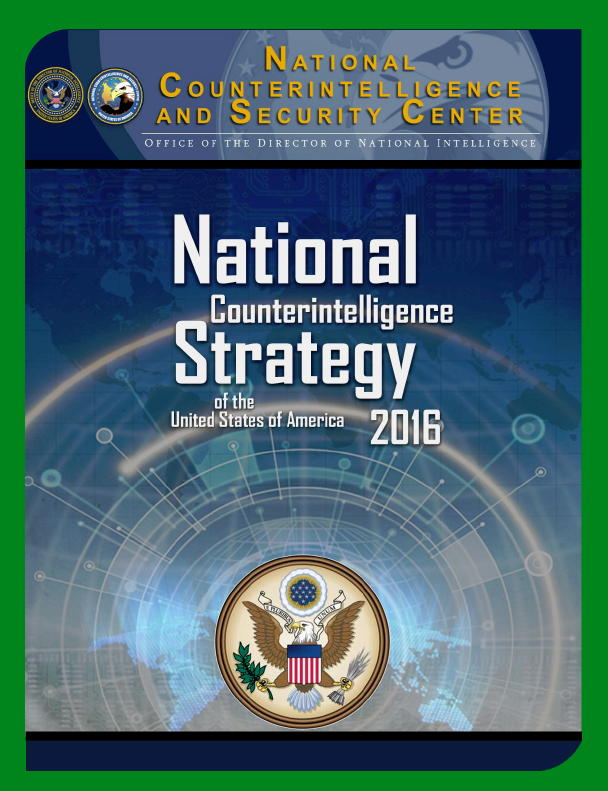The National Counterintelligence Strategy of the United States of America 2016 (Strategy) was developed in accordance with the Counterintelligence Enhancement Act of 2002 (Pub.L. No. 107-306, 116 Stat. 2383 (as amended) codified at 50 U.S.C. sec. 3383(d)(2)). The Strategy sets forth how the United States (U.S.) Government will identify, detect, exploit, disrupt, and neutralize foreign intelligence entity (FIE) threats. It provides guidance for the counterintelligence (CI) programs and activities of the U.S. Government intended to mitigate such threats.
Each U.S. Government department and agency has a role in implementing this Strategy in the context of its own mission and through application of its unique responsibilities and authorities. Nothing in this Strategy shall be construed as authorization of any department or agency to conduct CI activities not otherwise authorized under statute, executive order, or any other applicable law, policy, or regulation.
Strategic Environment
The United States is confronted with an array of diverse threats and challenges from FIE activities. Our adversaries include not only foreign intelligence services and their surrogates but also terrorists, cyber intruders, malicious insiders, transnational criminal organizations, and international industrial competitors with known or suspected ties to these entities. Many use sophisticated overt, covert, and clandestine methods to compromise our national security. Just as the nature, scope, and volume of our protected information and other vulnerable assets have evolved, so too has the threat environment. Technological advances have enabled our adversaries to both broaden and tailor their approach to subvert our defensive measures, harm and penetrate our information systems, steal sensitive data, and otherwise degrade our instruments of national power.
Strategic Response
The current and emerging CI challenges facing the U.S. require an integrated, whole-of-government response. Successfully countering threats from FIEs requires the U.S., both public and private sectors, to recognize the threat environment and implement appropriate countermeasures. The mission of countering FIEs is essential to preserving U.S. decision-making confidence and the critical information, technologies, infrastructure, and other assets that underpin our nation’s security and prosperity. Understanding the threats and responding in an integrated fashion are imperative to the successful implementation of this Strategy.
This Strategy puts forth both mission and enabling objectives to address the full range of capabilities needed to counter the diverse threats to our nation’s sensitive information and assets. The five mission objectives outline key activities required to identify, detect, exploit, disrupt, and neutralize FIE and insider threats and to safeguard our national assets, including cyberspace. The two enabling objectives provide the foundation for the mission objectives’ success by highlighting the need for these activities to be undertaken as part of an effective, responsible, and collaborative effort. Implemented together, the mission and enabling objectives create a CI posture capable of meeting 21st century threats.

